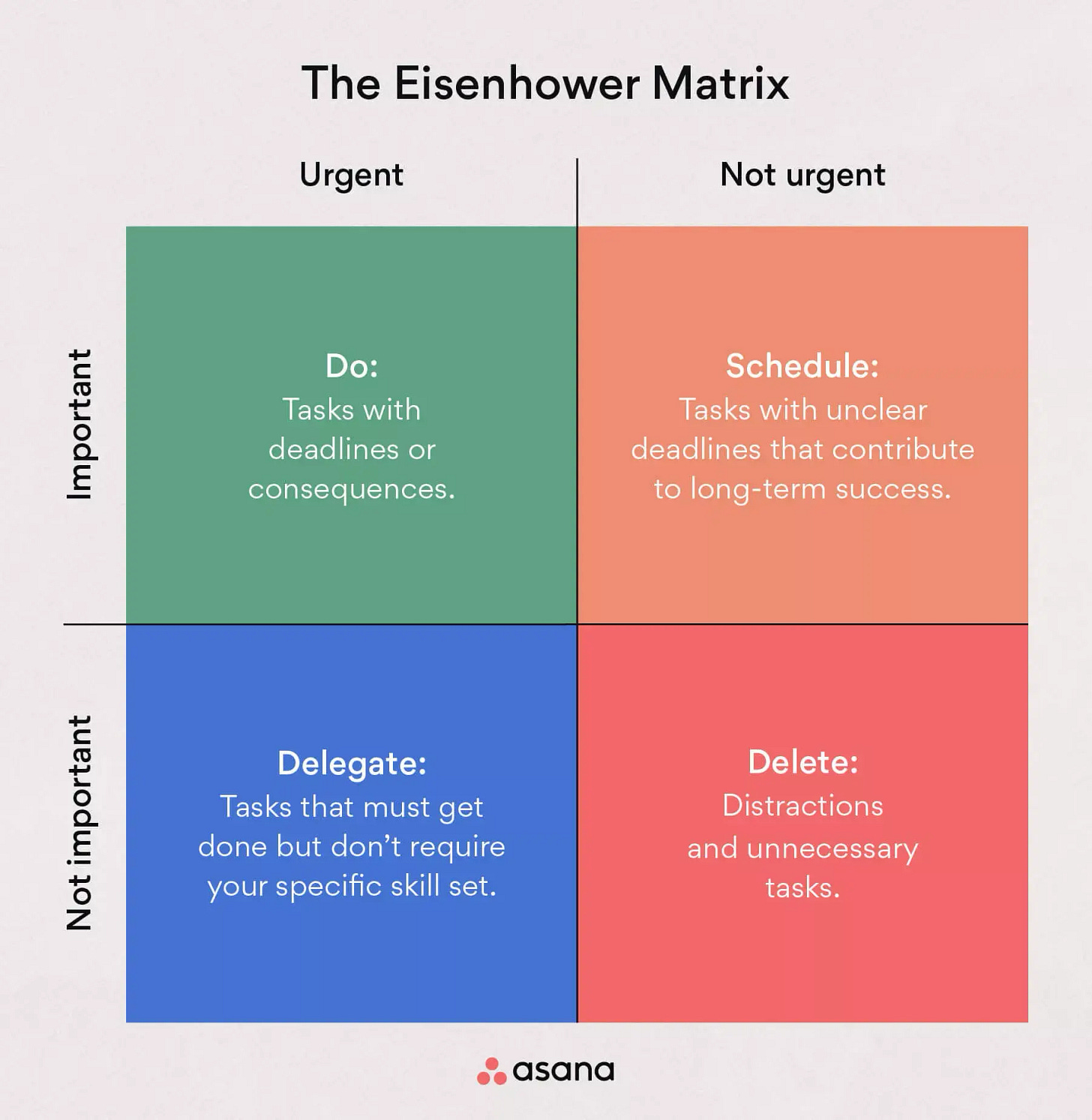Meetings vs "Real" Work
What do you do when you have too many meetings and not enough time to get anything else done? These 3 filters can help you prioritize your work.
On my busiest work day in the last month, I had a whopping 11 meetings on my calendar. It was higher than normal, for sure—on an average day, I have 7-9 meetings scheduled—but not as rare as I’d like.

Over the years I’ve lamented the fact that I am in so many meetings every day that I don’t have time for real work. And while that’s sort of true, I’ve also come to realize …
… as a leader, meetings often are the work.
I know that’s an overly simplistic view. As leaders, we are responsible for setting strategy, evaluating employees, and doing leadership administrivia that cannot be done inside of a meeting. (Or can it? 🤔)
So what’s a leader to do, when there are too many meetings and not enough time to get anything else done—how should we think about prioritizing our work?
One often-referenced method for prioritization is the Eisenhower Matrix, which categorizes work based on its urgency and importance. Focus on those activities that fall into the urgent and important quadrant, the matrix tells us, and delete those activities that are neither urgent nor important. Simple enough, right?
It’s an easy framework to understand, but often difficult to put into practice in a world where everything is not only urgent and important, but rapidly evolving, too.
If you find that to be the case as well, here are three additional filters you can use to help guide what you do—and do not—work on:
Do what only you can do. Consider if this work requires your unique skillset … is it something only you can do? Be honest, are you really the only person who can draft that strategy or build that plan? If not (and the answer almost always is, you’re not), then have someone else do it. It can be a great stretch assignment for a member of your team, and you can save time by getting involved to help review and refine the work instead of driving it from the beginning.
Unblock your team. Our job as leaders is to create the conditions and clear the path so that our teams can do their work, efficiently and effectively. It’s an amazingly simple and non-controversial concept that doesn’t often play out in real life. When your team tells you they’re stuck, act quickly on it. This might mean getting alignment from other organizational leaders, escalating issues, removing policy or technical impediments, or facilitating or making clear decisions. Or it could mean providing your team with the guidance they need to remove barriers themselves. Whatever is needed to unblock your team—do it. And do it quickly.
Laser focus on outcomes. Too much of our work is input and activities-driven, and not focused on the outcomes we’re intending to drive. What’s the ultimate goal of your work—reduce costs, drive revenue, improve margins, or something else? Get crystal clear on the outcome you’re driving and then get laser-focused on doing the work—and only the work—that directly impacts that goal.
Filters, meet meetings …
These prioritization filters won’t change your heavy meeting schedule. Sorry.

But you can use the filters to guide which meetings you attend, and then make the most of those meetings. For example:
Use 1:1s with team members to uncover the barriers they’re facing, and then act in real time to address them. I’ve shot off a Slack message or email more than once during a 1:1 to get the ball rolling. Sometimes we’ve even gotten an answer before the end of the meeting, and just like that—problem resolved.
Leverage team meetings, business reviews, and brainstorming sessions to articulate your unique vision, perspective, or direction … then empower someone on your team to run with the idea.
Use meetings you have with other leaders to identify cross-department issues and gain alignment on ways to solve them.
As leaders, we can lament our packed meeting schedule, or … we can reframe our understanding of meetings as the work, and then make those meetings work for us.
I vote for the latter.


